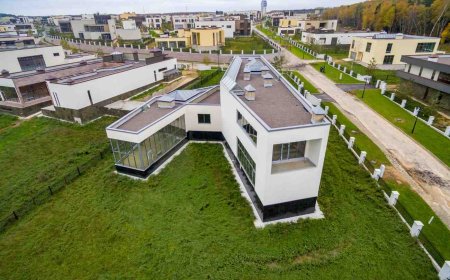Trauma Informed Education for Safe Learning Environments
Learn how trauma informed education creates safe, supportive learning spaces that foster student growth and resilience.
Educators are responsible for more than delivering instruction. They must also create environments where students feel emotionally safe. Many students arrive at school carrying the weight of trauma. This affects their ability to learn, build relationships, and stay engaged. Understanding how trauma affects learning is essential for every school leader and teacher.
Trauma informed education is a framework that prioritizes emotional safety, trust, and connection. It acknowledges how trauma disrupts brain function and influences student behavior. This approach equips educators to respond with empathy and structure, instead of judgment and punishment.
Principles and Foundations of Trauma Informed Education
Trauma informed practices are built on key principles that guide decision-making in classrooms and schools. These include safety, trustworthiness, collaboration, empowerment, and cultural responsiveness. When schools adopt these principles, they create a space where all students feel supported.
Trauma informed education does not label or isolate students. Instead, it seeks to understand behavior through the lens of past experiences. This shift from asking Whats wrong with you? to What happened to you? changes how educators approach discipline, engagement, and communication.
Trauma informed education promotes positive relationships between staff and students. It emphasizes routines and consistency to reduce anxiety. Teachers learn to identify triggers and support regulation through connection. These foundations shape an environment where learning is possible, even for students with complex emotional needs.
The Impact of Trauma on Student Learning and Behavior
Trauma affects brain development, emotional regulation, and cognitive function. Students who have experienced trauma may struggle with concentration, memory, and impulse control. They may react strongly to minor challenges or appear withdrawn in class.
These responses are not intentional. They reflect how the brain protects itself from perceived danger. Students with trauma histories often live in survival mode. When schools misunderstand these behaviors, students are often punished rather than supported. This approach increases harm and widens equity gaps.
Trauma informed education teaches staff to recognize these signs and respond with empathy. Classroom environments that reduce stress and increase predictability help students feel safe. When safety is present, students can focus on learning and building healthy relationships.
Abdul Malik Muhammad has championed the integration of healing-centered strategies in schools, making him a leading voice in advancing the goals of trauma informed education.
The Role of Educators in Trauma Responsive Schools
Educators are at the front lines of trauma informed practice. They must build strong relationships with students while managing the demands of instruction. Training and support are essential to help teachers succeed in this role.
Trauma responsive teachers use calm tones, clear expectations, and emotional check-ins. They understand that connection is a key part of discipline. Rather than sending students out of the room, they find ways to keep students engaged and supported in the learning space.
Creating a trauma informed classroom involves daily routines, regulated transitions, and consistent follow-through. Teachers build trust by showing up every day with compassion and structure. They help students feel seen, heard, and valued in their trauma informed education setting.
School-Wide Approaches to Trauma Informed Systems
For lasting impact, trauma informed practices must extend beyond the classroom. School-wide policies and leadership decisions must reflect the same principles. Administrators set the tone by modeling empathy, transparency, and accountability.
Discipline policies should prioritize repair and restoration over punishment. Staff meetings should include time for emotional support and shared learning. Trauma informed schools invest in mental health partnerships, professional development, and wellness resources.
At the systems level, trauma informed education becomes a foundation for every decision. From hallway interactions to staff communication, every action contributes to a safe environment. This shift requires planning, commitment, and community involvement.
akobenllc.org and Trauma Informed Educational Support
akobenllc.org provides consultation and coaching that supports the implementation of trauma informed models in schools. Their services include training on restorative practices, emotional safety, and leadership development that centers healing and accountability.
Akoben's approach ensures that schools not only understand trauma but actively respond to its effects. They help leaders build school cultures rooted in compassion, reflection, and inclusion. Through ongoing coaching, schools develop systems that reduce harm and increase student engagement.
The work at akobenllc.org aligns with the goals of trauma informed education by creating environments where all studentsregardless of their backgroundhave the opportunity to grow and thrive. Their expertise helps institutions transform policy and practice to center healing.
Building Emotional Safety and Student Resilience
Emotional safety is the foundation of learning. Without it, students remain in a state of survival that blocks attention, memory, and problem-solving. Trauma informed classrooms help students move out of this state by offering predictable routines, strong relationships, and compassionate guidance.
These environments teach students that school is a safe place. When students feel emotionally secure, they are more likely to take academic risks, participate in class, and form healthy relationships. Educators play a critical role in building this safety through daily actions.
Trauma informed education also fosters resilience. Students learn how to name their emotions, ask for help, and build coping skills. With consistent support, they begin to trust themselves and others. This trust leads to stronger academic performance and emotional development.
Long-Term Benefits of Trauma Informed Practices
The long-term benefits of trauma informed models extend beyond the classroom. Schools that embrace this approach see improved attendance, reduced suspensions, and increased academic achievement. Staff report lower burnout, and families feel more connected to the school community.
These results show that trauma informed education creates a ripple effect. When schools prioritize healing, they become places of growth for everyone. Students carry these experiences into adulthood, shaping healthier relationships, stronger communities, and better outcomes in life.
Trauma informed schools also strengthen equity. They recognize that trauma impacts students differently, based on identity, culture, and access to resources. By addressing these layers with intention, schools create fairer systems that serve all students.
Conclusion
Trauma informed education transforms schools into places of safety, connection, and growth. It shifts how educators see behavior, how leaders set policies, and how communities support young people. This approach fosters trust and builds emotional resilience, allowing all students to learn and thrive.
By working with partners like akobenllc.org, schools gain the tools, knowledge, and support needed to implement trauma informed models effectively. This journey requires commitment, but the results speak for themselves: stronger relationships, improved learning, and healthier school communities.
Every student deserves an environment where their history is honored, their needs are understood, and their future is supported. Trauma informed education makes this vision possibleone classroom, one relationship, and one policy at a time.



































